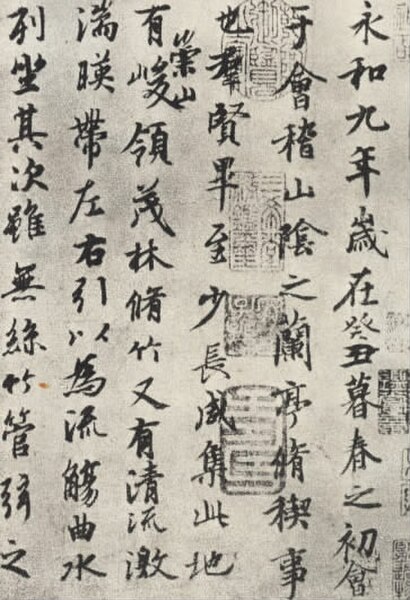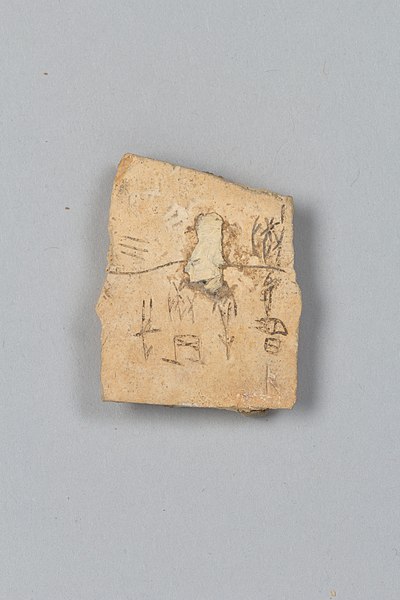The Lantingji Xu, or Lanting Xu, is a piece of Chinese calligraphy work generally considered to be written by the well-known calligrapher Wang Xizhi (303–361) from the Eastern Jin dynasty (317–420).
Wang Xizhi's Lantingji Xu.
Figure 1 Juran, Xiao Yi Getting the Orchid Pavilion Scroll by Deception, 10th century, ink and colour on silk, 144.1 × 59.6 cm.
Figure 2: Lantingji Xu attributed to Feng Chengsu, Tang dynasty, ink on paper. Palace Museum in Beijing.
Figure 3 Yanxi, details of Huashanmiao, Han dynasty, stone rubbing. Collection of Hong Kong Chinese University (Clerical Script)
Chinese calligraphy is the writing of Chinese characters as an art form, combining purely visual art and interpretation of the literary meaning. This type of expression has been widely practiced in China and has been generally held in high esteem across East Asia. Calligraphy is considered one of the four most-sought skills and hobbies of ancient Chinese literati, along with playing stringed musical instruments, the board game "Go", and painting. There are some general standardizations of the various styles of calligraphy in this tradition. Chinese calligraphy and ink and wash painting are closely related: they are accomplished using similar tools and techniques, and have a long history of shared artistry. Distinguishing features of Chinese painting and calligraphy include an emphasis on motion charged with dynamic life. According to Stanley-Baker, "Calligraphy is sheer life experienced through energy in motion that is registered as traces on silk or paper, with time and rhythm in shifting space its main ingredients." Calligraphy has also led to the development of many forms of art in China, including seal carving, ornate paperweights, and inkstones.

Chinese calligraphy
Oracle bone fragment, Shang dynasty (ca. 1600–1046 BC)
Memorial to Yueyang Tower by Fan Zhongyan, Song dynasty
On Calligraphy by Mi Fu, Song dynasty








